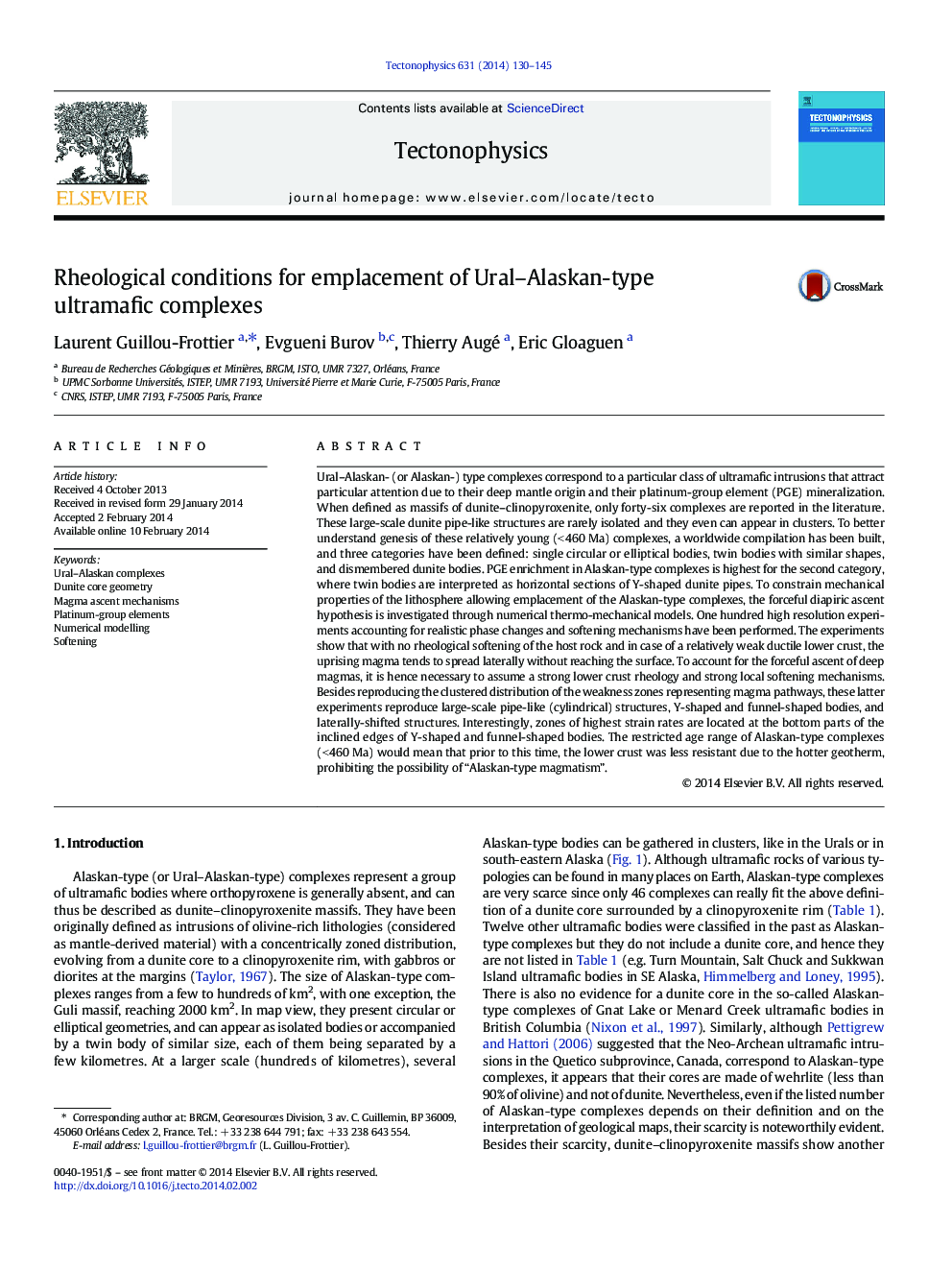| کد مقاله | کد نشریه | سال انتشار | مقاله انگلیسی | نسخه تمام متن |
|---|---|---|---|---|
| 4691881 | 1636760 | 2014 | 16 صفحه PDF | دانلود رایگان |
عنوان انگلیسی مقاله ISI
Rheological conditions for emplacement of Ural-Alaskan-type ultramafic complexes
ترجمه فارسی عنوان
شرایط رئولوژیک برای جایگزینی مجتمع های اولترامافیک نوع اورال-آلاسکا
دانلود مقاله + سفارش ترجمه
دانلود مقاله ISI انگلیسی
رایگان برای ایرانیان
کلمات کلیدی
مجتمع اورالا آلاسکا، هندسه هسته هسته ای، مکانیسم صعود مگما، عناصر گروه پلاتین، مدل سازی عددی، نرم کردن
موضوعات مرتبط
مهندسی و علوم پایه
علوم زمین و سیارات
فرآیندهای سطح زمین
چکیده انگلیسی
Ural-Alaskan- (or Alaskan-) type complexes correspond to a particular class of ultramafic intrusions that attract particular attention due to their deep mantle origin and their platinum-group element (PGE) mineralization. When defined as massifs of dunite-clinopyroxenite, only forty-six complexes are reported in the literature. These large-scale dunite pipe-like structures are rarely isolated and they even can appear in clusters. To better understand genesis of these relatively young (<Â 460Â Ma) complexes, a worldwide compilation has been built, and three categories have been defined: single circular or elliptical bodies, twin bodies with similar shapes, and dismembered dunite bodies. PGE enrichment in Alaskan-type complexes is highest for the second category, where twin bodies are interpreted as horizontal sections of Y-shaped dunite pipes. To constrain mechanical properties of the lithosphere allowing emplacement of the Alaskan-type complexes, the forceful diapiric ascent hypothesis is investigated through numerical thermo-mechanical models. One hundred high resolution experiments accounting for realistic phase changes and softening mechanisms have been performed. The experiments show that with no rheological softening of the host rock and in case of a relatively weak ductile lower crust, the uprising magma tends to spread laterally without reaching the surface. To account for the forceful ascent of deep magmas, it is hence necessary to assume a strong lower crust rheology and strong local softening mechanisms. Besides reproducing the clustered distribution of the weakness zones representing magma pathways, these latter experiments reproduce large-scale pipe-like (cylindrical) structures, Y-shaped and funnel-shaped bodies, and laterally-shifted structures. Interestingly, zones of highest strain rates are located at the bottom parts of the inclined edges of Y-shaped and funnel-shaped bodies. The restricted age range of Alaskan-type complexes (<Â 460Â Ma) would mean that prior to this time, the lower crust was less resistant due to the hotter geotherm, prohibiting the possibility of “Alaskan-type magmatism”.
ناشر
Database: Elsevier - ScienceDirect (ساینس دایرکت)
Journal: Tectonophysics - Volume 631, 15 September 2014, Pages 130-145
Journal: Tectonophysics - Volume 631, 15 September 2014, Pages 130-145
نویسندگان
Laurent Guillou-Frottier, Evgueni Burov, Thierry Augé, Eric Gloaguen,
